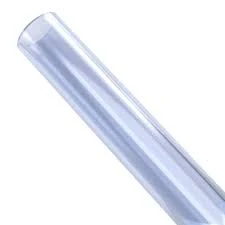Lis . 18, 2024 19:07 Back to list
electrical pvc pipe
Understanding Electrical PVC Pipes A Comprehensive Overview
Electrical PVC pipes, also known as electrical conduits, have gained significant popularity in the construction and electrical industries due to their durability, corrosion resistance, and lightweight nature. This article delves into the essential aspects of electrical PVC pipes, including their characteristics, advantages, applications, and installation techniques, making them a preferred choice for electrical wiring protection and management.
What is Electrical PVC Pipe?
Electrical PVC pipe is a type of polyvinyl chloride pipe designed specifically for electrical installations. These pipes are used to protect and route electrical wiring in both residential and commercial settings. Unlike standard PVC pipes, which are primarily intended for plumbing or drainage applications, electrical PVC pipes meet specific safety and performance standards set by industry regulations.
Key Features
1. Chemical Resistance Electrical PVC pipes are resistant to a wide range of chemicals, making them suitable for use in various environments. This resistance helps to maintain the integrity of the electrical systems they house.
2. Lightweight and Durable One of the most significant advantages of PVC is its lightweight nature. This makes transportation and installation easier compared to heavier materials like metal conduits. Despite being lightweight, electrical PVC pipes are remarkably durable and can withstand considerable stress and impact.
3. Non-Conductive As a non-conductive material, PVC provides an added layer of safety. This characteristic protects against the risk of electrical shock, which is particularly important in environments where moisture or exposure to corrosive substances might occur.
4. Easy Installation Electrical PVC pipes can be easily cut, shaped, and joined using a variety of fittings, which streamlines the installation process. This versatility allows electricians to create custom paths for wiring with minimal effort.
Advantages of Using Electrical PVC Pipes
1. Cost-Effectiveness Compared to metal conduits, electrical PVC pipes are generally more affordable. Their lightweight property also reduces transportation and labor costs during installation.
2. Weather Resistance Electrical PVC pipes can withstand a wide range of environmental conditions, including UV exposure and moisture. This resistance enables them to be used both inside buildings and outside in exposed settings.
3. Reduced Maintenance PVC does not require the same level of maintenance as metal conduits, which can corrode or rust over time. This durability leads to lower long-term maintenance costs.
4. Fire Resistance While PVC is not inherently fireproof, certain grades of electrical PVC pipes are designed to provide enhanced flame-resistance, contributing to overall safety in installations.
electrical pvc pipe

Applications
Electrical PVC pipes are commonly used in a variety of applications, including
- Residential Wiring Used to route electricity throughout homes, providing organized channels for wires and minimizing the risk of damage.
- Commercial Installations Widely used in offices, retail spaces, and industrial settings where a safe and efficient electrical system is crucial.
- Outdoor Settings Given their resistance to moisture and UV rays, electrical PVC pipes are ideal for outdoor electrical projects, including landscape lighting and outdoor electrical outlets.
- Telecommunications Used for housing cables in telecommunications networks, ensuring protection from environmental factors.
Installation Techniques
Installing electrical PVC pipes requires proper techniques to ensure safety and functionality. Here are some essential steps
1. Planning the Layout Before installation, a well-thought-out plan for the routing of pipes should be created, considering the paths of the electrical wiring.
2. Cutting and Joining Pipes can be cut to the desired lengths using a saw. Connection fittings should be applied securely to ensure no gaps that could expose wiring.
3. Securing the Pipes Use brackets or straps to firmly attach the pipes to walls or ceilings, preventing movement and potential damage.
4. Sealing the Ends Ensure all cut ends are properly finished and sealed to prevent water ingress and protect the wiring.
Conclusion
Electrical PVC pipes are a robust, versatile, and economical solution for wiring installations. Their unique properties offer numerous benefits across various applications, making them an integral component in both residential and commercial electrical systems. Understanding the characteristics and proper installation methods of these conduits can enhance safety, efficiency, and durability in electrical projects. As technology advances, the future of electrical PVC pipes promises even greater innovations, ensuring their continued relevance in modern construction and electrical wiring.
-
PVC Grey Sheet for Extraction: Chemical Resistant & Durable
NewsAug.19,2025
-
Durable PVC Pipe Fittings for Plumbing & Irrigation Needs
NewsAug.18,2025
-
HDPE Steel Belt Reinforced Spiral Corrugated Pipe | High Strength
NewsAug.17,2025
-
HDPE Pipe Fittings: Durable, Leak-Proof Solutions
NewsAug.16,2025
-
Premium CPVC Sheet: High-Temp & Chemical Resistant Solutions
NewsAug.15,2025
-
Durable PPR Pipe for Hot & Cold Water Systems - Easy Install
NewsAug.14,2025

